Welcome To Our Health Forum
Please let us know what other topics you would like added by sending us an email.

Read this article before you consider paying for your drinking water: Wouldn't it be nice to stop poisoning ourselves with polluted or unhealthy drinking water? I, for one, felt that I would love to find a source of safe inexpensive drinking water. (Ideally, I'd love to turn on the tap, and out it would flow!) Whether it's curing cancer with magnets or herbal wonder-remedies or Vioxx, we've all seen the fantastic claims people make about their health products AND about how your whole life will be changed! I can tell you right now that 90% are frauds. You may even have fallen prey to some of these scams, selling you the latest fad. Me too. I've bought so many kinds of drinking water, I can't recall. (If a lie is repeated often enough, it becomes "the truth"). Finally, after many disappointments I got FED UP. I decided to get to the bottom of this desire we all have to make sure that our most basic nutrient -- water -- will keep us healthy, not make us sick. I checked out endless commercial websites and a number of university and government sites; and I was dismayed at what I repeatedly found: -- Outdated information or info repeated from other websites -- Wild and sensational claims -- No research -- No refunds, etc. I already knew that we can't trust our tap water because of the presence of up to 2000 contaminants. Specifically, I found: a) Bottled Water: a real mishmash of quality, often no more than filtered tap water sold at outrageous mark-ups and at quite an environmental cost. b) Reverse-osmosis and distilled water: completely ignored the medical evidence of the dangers in the ongoing drinking of water that is void of minerals, acid in nature, and oxidizing. I quickly realized that these products were either useless, overpriced, or potentially harmful after long-term use. And the companies were smiling all the way to the bank. Nevertheless, I was able to find products that were well-researched and legitimate, such as water ionizers and certain filters. I hope that you're not misled by false claims, and take a look at the resources available, for the sake of your health.
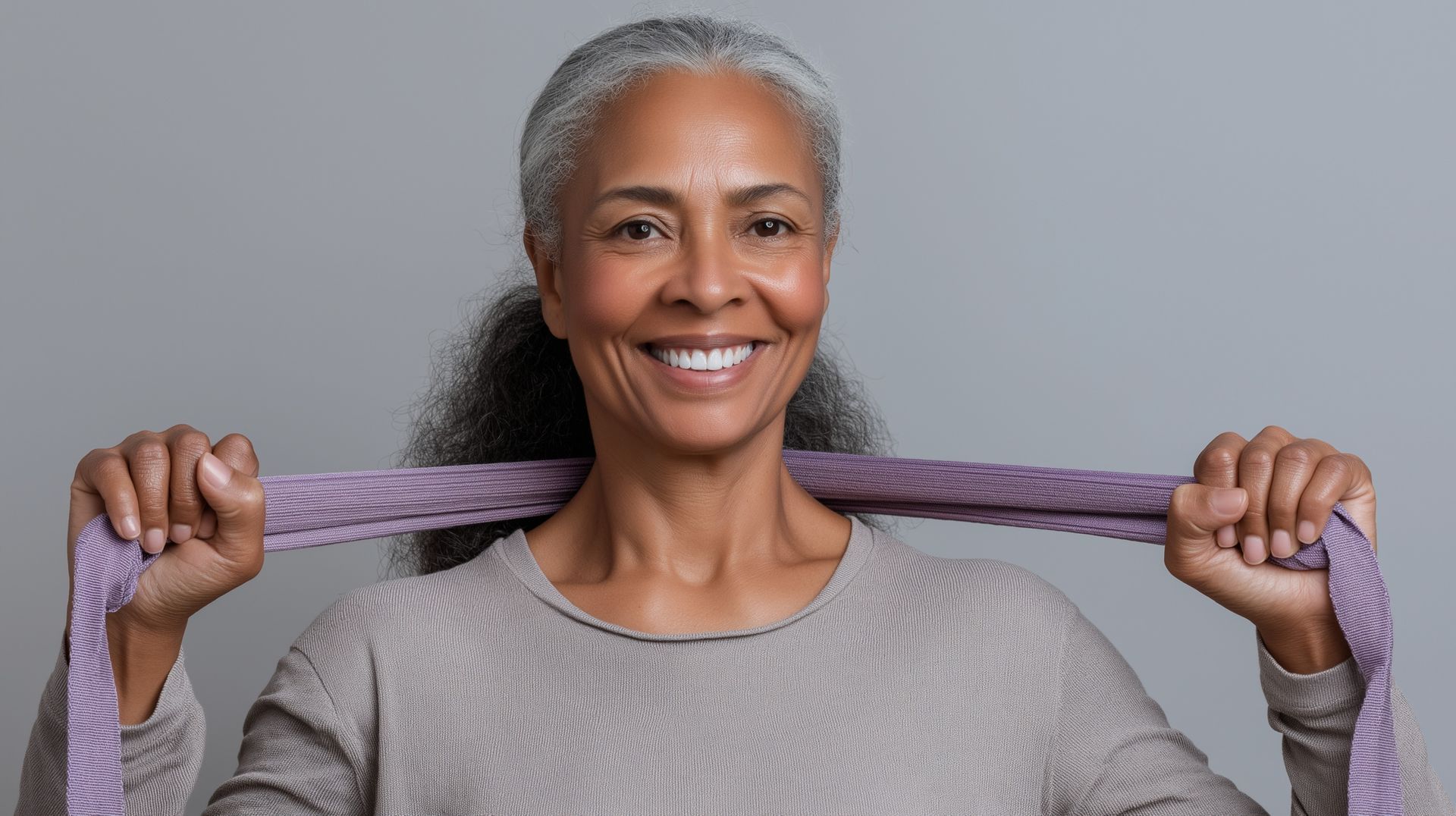
There’s a lot of debate when it comes to stretching and about what is the best way to improve flexibility. Some believe that doing the same stretches every day will provide the best results while others suggest that doing so could do more harm than good. This leads them to believe that you should vary your stretches every day. Strength Training is NOT Stretching: More than likely, this belief that you can’t stretch the same muscles two days in a row comes from the idea that you shouldn’t do strength training on the same muscles two days in a row. While this is true of strength training which works by damaging then repairing muscles, it’s not true of stretching, which shouldn’t damage your muscles. Stretching does not damage muscles at the cellular level the way strength training does. Instead, it gently pulls your muscles and lengthens the fibers while extending the range of motion in the nearby joints. For this reason, it’s not only safe but beneficial to stretch every day. One recent study even found that stretching muscles less than 6 times per week did nothing for them. The study focused on the hamstring in the upper leg because this large muscle is easiest to measure. Four sets of participants stretched the muscle at different intervals throughout the week. Some stretched every day while others stretched only 3 days per week. It was found that those that stretched every day improved the length of their muscle while those who only stretched 3 days had little improvement. Why Stretch Every Day? It’s important to realize that while you may not exercise every day, you are moving every day, which is why it’s important to stretch those muscles every day if you want to get more flexible. You use your muscles while performing regular tasks every day, so as they get used, they are warmed up and ready to be stretched to encourage flexibility. Another reason to stretch every day is that it keeps you in the habit. Even if stretching is the only thing you do as far as exercise goes every day, it’s beneficial. However, if you only stretch a few days a week, it’s easy to forget and get lazy about it. However, if you make it part of your daily routine, then it’s easier to remember and soon your day won’t feel complete without stretching. What to Stretch Every Day: The best thing you can do for your body is to go ahead and stretch everything every day. If you have certain areas that you’re concerned about or want to focus on, then you may even want to do these twice per stretching session or twice per day. But, in general, it’s a good idea to make sure that every part of your body gets stretched every day. To make sure that you stretch every part of your body every day, find a routine to follow, whether you go along with a DVD or create a written list of your favorite stretches that cover every major muscle group. By doing the same thing every day, this will further help you establish a routine and will ensure that you cover every part every day.
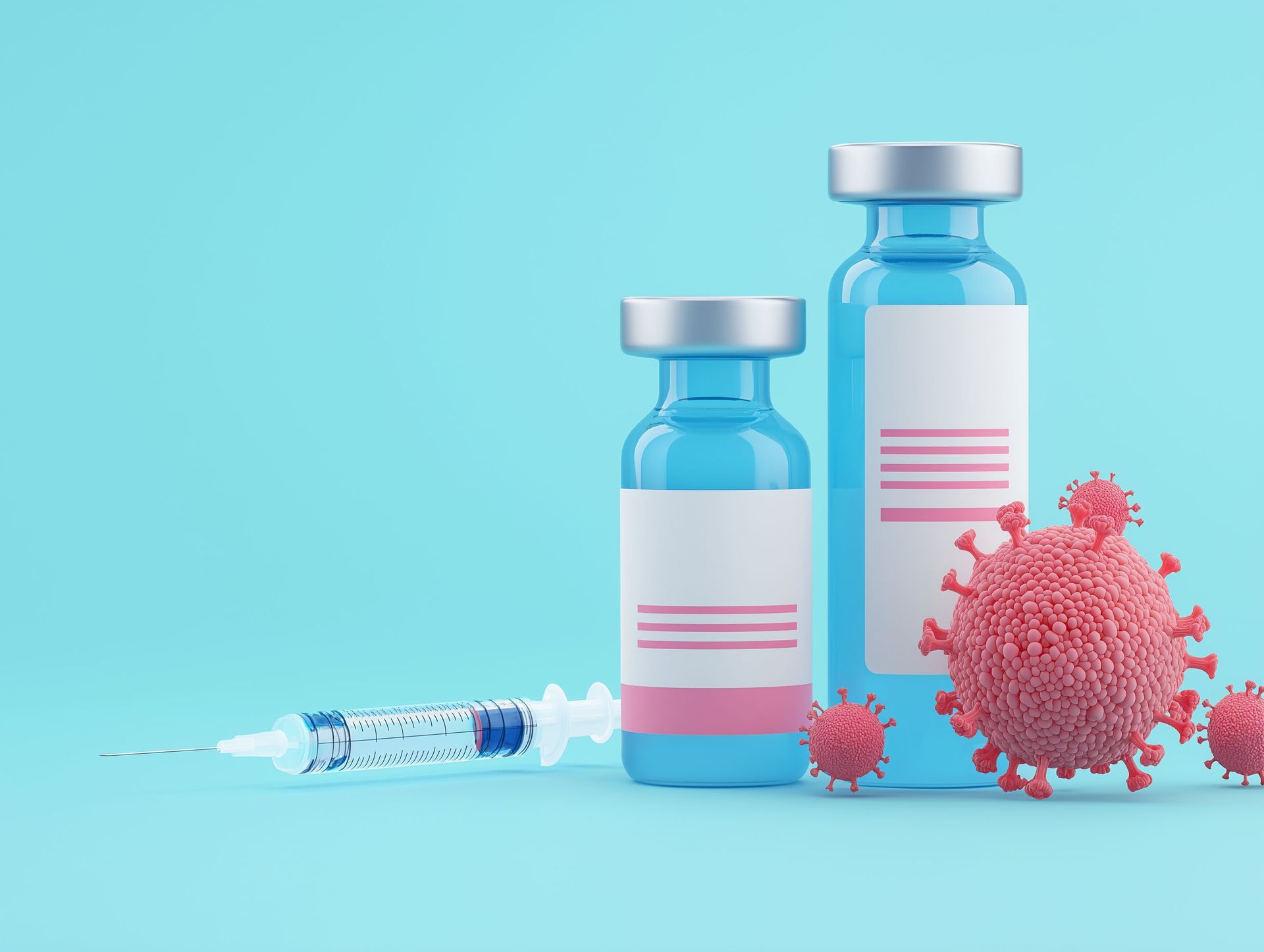
With the flu season ever approaching, you will want to prepare yourself. The worst thing that can happen during the holiday season is to get bogged down with the flu. There is simply too much going on for you to be stuck at home sick. But what can be even worse is having your kids be the ones to catch the flu. Because then you have to stay home and take care of them. Sometimes, children and flu vaccine do not mix, as there is often a lot of complaining to be had when you try to get them one. So, all in all, your child getting the flu is not something you want to deal with. But there are some methods you can use to minimize the risk of them even getting sick. 1. Keep active. Exercise is a great way to boost the immune system, so having your kid remain active and stay in shape allows their immune system to run at peak capacity. Now exercise does not necessarily mean thirty-minute workouts or going to the gym. Simply having them run around playing with friends is great exercise. But if they are going to be playing out in the snow make sure they are bundled up tight. 2. Fruits and vegetables. Another method for boosting your child's immune system is to feed them plenty of fruits and vegetables. These types of foods contain various vitamins and minerals needed for a strong immune system. So, simply by changing up their diet, you can spare yourself of trying to mix Children and Flu vaccine. 3. Rest. Getting plenty of rest is yet another major component of keeping your children healthy. While exercise is important, recharging after an action-packed day is equally as important. If they do not get enough sleep, their body will not be as recharged as it should be and will not be able to fight off the flu as well as it should. 4. Keep their hands clean. Kids love running around and they love to get their hands on things. There are a lot of germs out there, and while you do not have to be all OCD over it, you should make sure they wash their hands regularly to prevent them from picking up something particularly nasty. When germs invade their body, it is the immune system that fights them off, but if their immune system is busy fighting off the various small-time germs they have picked up, it makes it easier for the flu to move in and take hold. So, keeping their hands clean can go a long way towards preventing that. 5. Flu shot. Lastly, and probably the most dreaded preventative measure for any parent is the nightmarish flu shot. As I have said above, children and flu vaccine rarely mix well and there is often a lot of complaining to be had. But as painful as it might be, ultimately it is in their best interest. Simply getting a flu shot is probably the best method out there for protecting them against the flu.
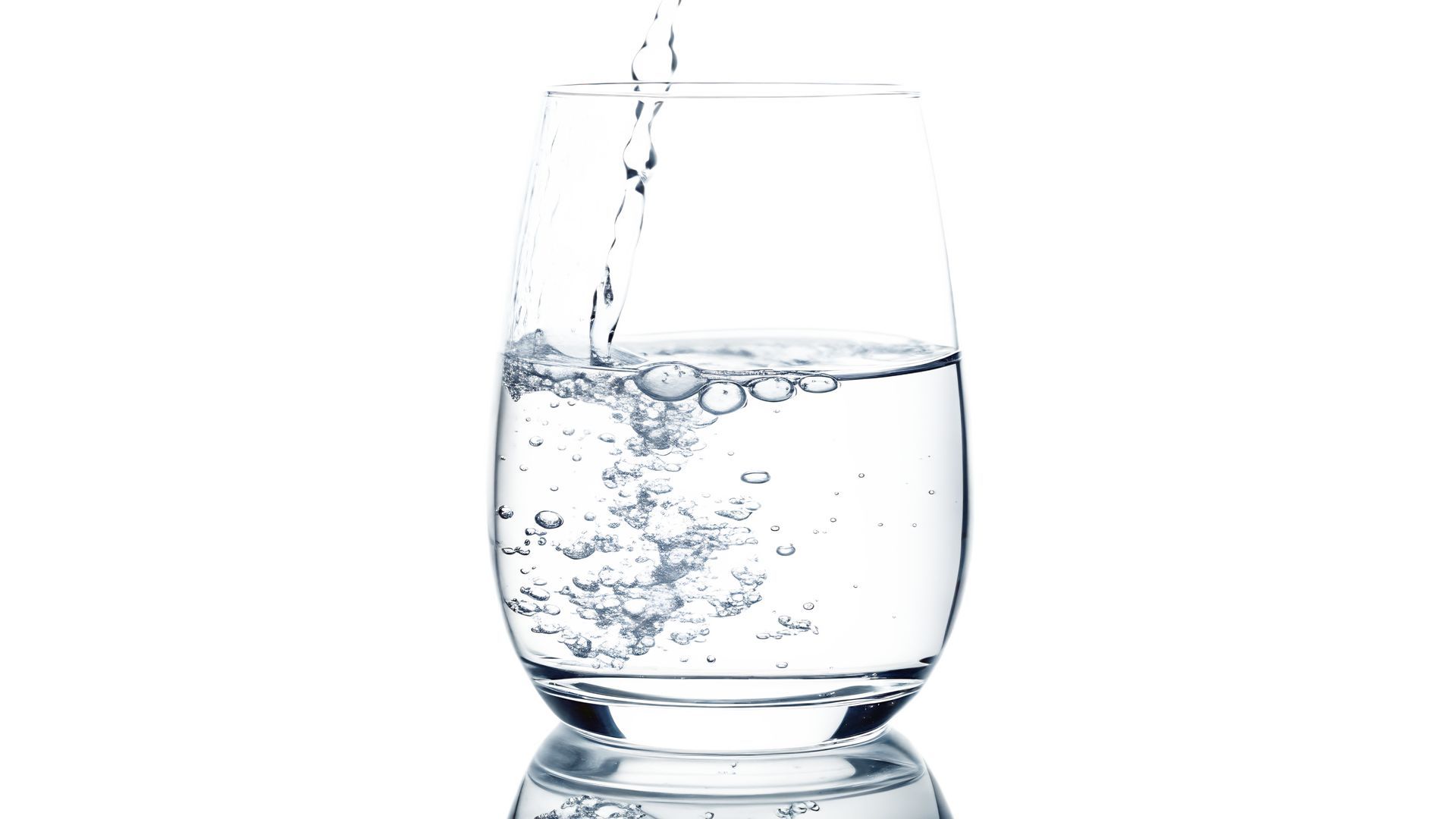
What the Experts Say: In health circles, there has been much recent talk about acid /alkaline imbalance. Let's see if we can clarify how experts recommend we correct this imbalance. The problem: Your body functions best when neither too acid nor too alkaline. Unfortunately, almost all of us have become acidic due to diet, drinks and stress -- both psychological and from pollution. Acids can build up in our body, causing systems to be out of balance. The effects: According to Dr. Stefan Kuprowsky, "Acid wastes build up in the body in the form of cholesterol, gallstones, kidney stones, arterial plaque, urates, phosphates and sulfates. These acidic waste products are the direct cause of premature aging and the onset of chronic disease." When this occurs, the body will restore its optimal pH by depleting certain minerals, such as potassium, calcium and magnesium, from organs and bones. In addition, your immune system may become fatigued from dealing with an excess of acid. Your body then stores acidic wastes in 'hiding places' such as muscles etc. rather than releasing the acids into the bloodstream. As Dr. Robert Atkins, the well-known author, health and diet expert, notes: "Just about every condition I can think of, from arthritis to diabetes to cancer, is associated with acidity." "The countless names of illnesses do not really matter. What does matter is that they all come from the same root cause...too much tissue acid waste in the body!" Theodore A. Baroody, ND, Ph.D. What can be done? A vast body of research reveals that you can help neutralize acid build-up in the blood and maintain a balanced pH, by taking some simple steps, such as: -- Exercise -- Avoiding highly acid-forming food and drink -- Drinking the right water What is the "right" water? "International studies show that populations with little or no history of illness, such as cancer, drink higher pH (alkaline) waters. After all potential risk factors were considered and factored out, it became evident that they had been drinking waters with a pH of 9.0 to 10.0." Dr. Leonard Horowitz in "Aids and Ebola" Alkaline ionized water "first came to notice in Japan, where researchers noted that people drinking water that came from certain fast- moving rocky mountain streams enjoyed extraordinarily good health. It turned out that this naturally occurring water was alkaline and had a different structure and electrical properties." Larry Clapp, PhD. in "Prostate Health in 90 days" Alkaline water is produced at home with a small kitchen appliance called a water ionizer (long in use in Japan and Korea). As water ionizers have become popular in North America, more health professionals have had the opportunity to evaluate their effects on clients. Sue Pollock, N.D. writes, we can "assist the body in being more alkaline with ...drinking alkaline water." "I believe that the best water is water that is alkaline (reduced) and purified using a small device known as a water ionizer." (Dr. Stefan Kuprowsky) "It is my opinion that ionized water will change the way in which all health practitioners and the public approach their health in the coming years." Dr. T. Baroody in "Alkalize or Die." Why not just rely on a change of diet? According to Sang Whang, researcher and author of "Reverse Aging", the danger is that we might omit important foods. "Since the waste products that we are trying to discharge are acidic, the right kind of water is alkaline water...My personal recommendation is to enjoy the foods that we like, but do not over-eat or exclude any food. Eat in moderation following the professional dieticians' "balanced diet" concept, and let alkaline water do the job of cleansing acidic wastes."

When it comes to stretching, there are innumerable stretches that you can do, all of which can help you become more flexible, increase mobility, and reduce muscle and joint pain. But, with so many to choose from, it can be hard to know which ones to do. Of course, if you have a certain part of your body that you want to focus on, then you can do various stretches for that part of the body. However, if you’re looking for stretches that help your entire body, then there are a few other ones that you’ll need to do. Here are 3 essential stretches you need to know: Side Bend: This stretch will stretch out your abdominal, back, and lateral muscles as well as your hips. Begin the stretch from a standing position with your feet in line with your shoulders. Reach your hands over your head and press the palms of your hands together as high as you can reach. Take a deep breath in and pull your spine as straight and tall as you can manage. As you exhale, bend your body to the right so that you can feel the stretch through your arm and down your left side. Be sure to maintain a good form by keeping your arms and upper body in the same position. Hold the pose for 60 seconds, maintaining deep breathing throughout. Then, return to an upright position as you exhale and do the same thing to the left. Although not quite as effective, this stretch can also be done from a chair. Chest Opener: This stretch focuses on your chest muscles, triceps, and shoulders. Begin from a standing or sitting position. Then, reach your arms behind your head, clasping your hands at the back of your head. As you take a deep breath in, lift your chest as you pull your elbows back and keep your hands anchored behind your head. Relax your position slightly as you exhale, then continue to stretch your chest and arm muscles further with each subsequent breath. You should maintain this pose for 10 slow breaths or 60 seconds. Quad Stretch: Use this stretch to improve range of motion in your knees and to stretch out your quadriceps. While standing, lift your right foot up and grab it with your right hand at the ankle. Gently pull your heel to your glute until you can feel the stretch in the front of your leg. Keep your knees as close together as you can and hold the pose for 60 seconds. Once you finish on one side, you can do the same with the left leg. This pose can only be done while standing. If you are worried about maintaining balance during this stretch, you can hold onto a sturdy piece of furniture or use a wall to steady yourself while performing this essential stretch. By doing these 3 essential stretches every day, you will quickly see improvements in these parts of the body in terms of flexibility and mobility.
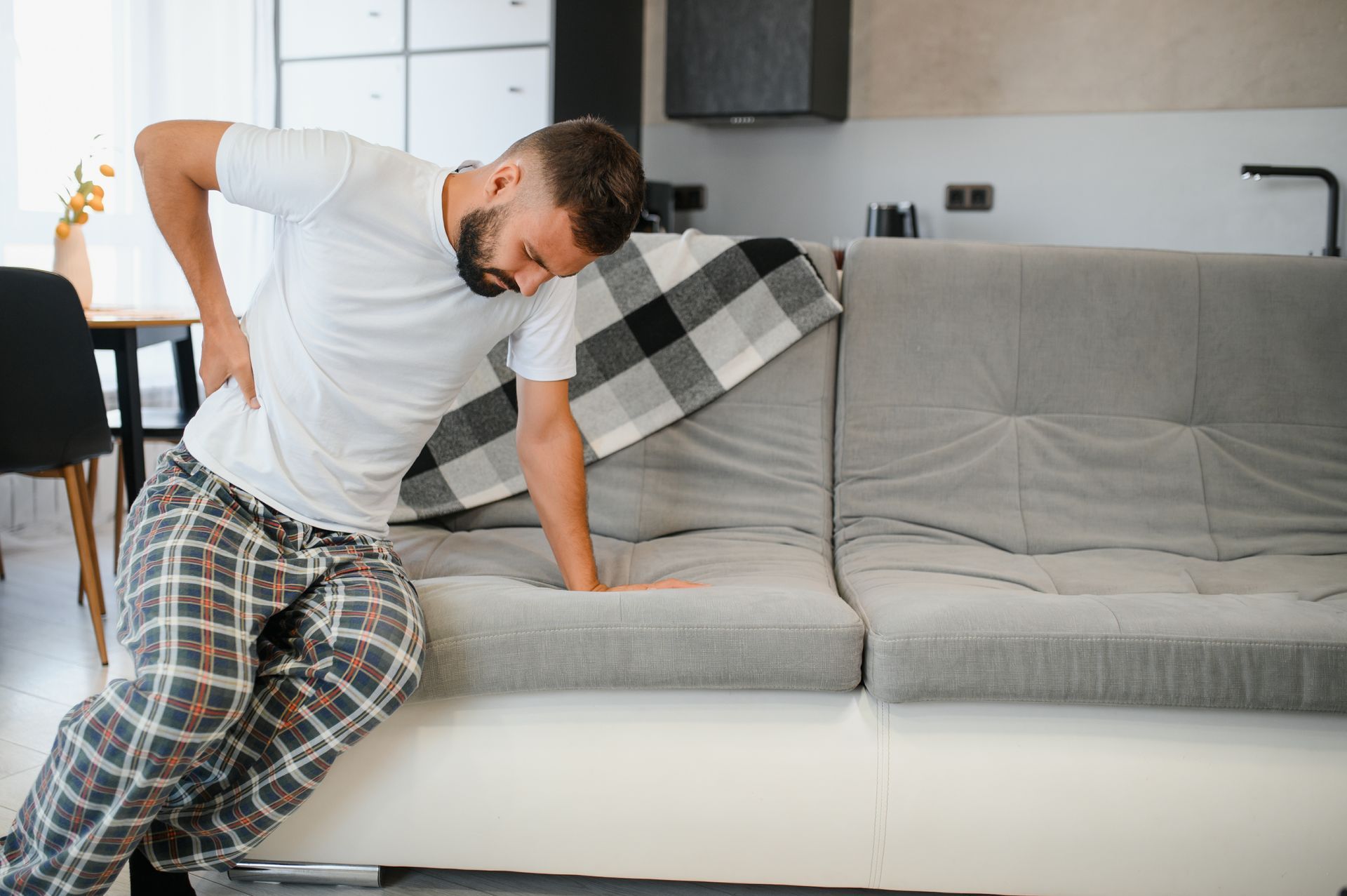
Kidney stones are caused by a buildup of calcium and can inhibit the ability to urinate, and they are extremely painful. They can be caused by dehydration, infections, and disease. Stones take time to form, even though at first you won't even know they are there. They form when your body is unable to clear urinary waste out completely. This waste can form solid blockages, which if left unchecked, will cause kidney stones and severe pain. Sometimes kidney stones appear in patients that aren't considered at risk for them. The good news is that there are herbs that relieve kidney stones. If you are experiencing pain in your groin, lower stomach or back, accompanied by vomiting and dark orange or reddish urine, or if you experience pain while urinating, it's likely you have a kidney stone. Once the kidney stone is formed it's very important to get rid of it as soon as possible, not just for pain relief but also because the stone can cause serious damage to your kidneys. In order to help prevent the formation of the kidney stones in the first place, one thing you can do is to make sure you drink plenty of water every single day. Proper hydration will keep your kidneys flushed out, which might help prevent the formation of stones. There are some herbs that act as diuretics and help increase urine flow: dandelion, juniper berry, fennel, meadowsweet, cornsilk, horsetail, goldenrod, and sassafras. If you have kidney stones already, there are some herbal remedies that may be able to help relieve them: 1. Hydrangea: Helps to dissolve the stones and allow you to urinate more easily. It can help relieve some of the pain in the stomach, back and groin associated with having kidney stones. A possible side effect could be loose stool or diarrhea, of course everyone is different, and your results could vary. 2. Catnip: Helps unblock the urine and allow it to flow more freely. It can cause gas and/or cramping. 3. Cleavers: This is a great remedy for many types of bladder and kidney related health issues. It can help relieve the problem of being unable to urinate due to blockage and can help the liver and remove stones in the bladder as well as the kidney. This herb can be used in tea. Just add three to four ounces of dried Cleavers to one quart of water. Drink this tea daily to gain the maximum benefit. This will help prevent kidney stones or help dissolve existing stones. The bad news is that kidney stones are painful and can make it difficult to urinate, not to mention the fact that kidney stones can cause serious damage to your kidneys. The good news is that they can sometimes be prevented naturally by using various herbs. If you already have them, there are herbs that can relieve kidney stones. Find out all you can to take care of yourself and continue to educate yourself on all your health needs.

Our bodies thrive on all that is fresh and vital. Raw food diets promote eating and drinking ‘living’ food. A diet of at least 75% raw food offers numerous health benefits, starting with weight loss and detox. Read about all the benefits of a raw food diet and try some simple but yummy recipes! Eating raw foods is natural. Our bodies thrive on all that is fresh and vital. A raw food diet (or increasing the amount of raw food that you eat) is bound to bring a feeling of increased wellbeing. Raw food diets are based on unprocessed and uncooked plant foods, preferably organic, such as a variety of fresh fruits and veggies, nuts, seeds, grains, dried fruit, fresh juices and purified water. Why Raw Foods? Basically a vegetarian diet, the raw food diet promotes eating and drinking ‘living’ foods. Living foods and juices contain the maximum amount of fiber found in raw produce, fiber that can be lost in processing. Such foods are easily metabolized and tend to be lower in calories than the average diet. Heating food above 116°F destroys enzymes in food that aid in digestion and in absorption of food, diminishing its nutritional value. Benefits of a Raw Food Diet: A diet of at least 75% raw food offers numerous health benefits, such as increased energy, improved skin appearance, better digestion, weight loss and reduced risk of serious illnesses like heart disease, diabetes and cancer. A raw food diet contains little or no saturated fats, is low in sodium, high in potassium, magnesium, folate and fiber. Raw food diets are also excellent detox diets. Different combinations of raw, living foods and juices can be used for colon cleansing, liver cleansing, kidney cleansing and skin cleansing. The Basics of a Raw Food Diet: Any fresh fruits, vegetables, grains, seeds, beans, nuts, legumes, young coconut milk – even seaweed – can be menu items of a raw food diet. Your choice of foods may depend on your reasons for dieting, for example: - sprouted brown rice slows glucose absorption and improves the metabolism - cabbage supports healthy cellular function; radish leaves act as an antioxidant, as does Shiitake mushrooms -carrots are a great source of vitamin A and encourage healthy vision and a healthy cardio-vascular system You can use a sprouter to sprout seeds, grains, beans – even wheatgrass. Sprouts could be called a ‘super food’ – organic sprouts contain enormous levels of proteins, vitamins, minerals, trace minerals, chlorophyll pigments and enzymes, and are the ideal natural supplement. Sprouts can be used in salads and soups, or they can be juiced. Fresh juices are a great ready energy supply, and a good quality juicer produces living juices that are full of essential nutrients. A great juicing recipe to complement a raw food diet is carrot juice with potato, fennel and apple. Simply juice 4 medium carrots, 2 apples, 1 small potato and 1 small stalk of fennel. Fennel has been shown to reduce and control inflammation of arthritis, it evens mood fluctuation and depressive states, and has the rare nutrient called manganese, plus zinc and vitamin B complex. The nutritional value of grains and seeds is impressive. They contain most of the vitamins – particularly A, B, and E. They’re also fantastic natural sources of unsaturated fatty acids and lecithin, and an excellent source of proteins. You can even use soymilk makers to make non-dairy drinks from different beans, rice, nuts, seeds and grains to have with breakfast. If you want something a little more substantial than soy milk you can make your tofu (or, of course, visit a good health food shop). Essentially, the idea of a raw food diet is to eat unprocessed foods for at least 75% of the time. If the idea of raw food isn’t very appetizing to you, you can warm the food a little as long as the food isn’t heated above 116°F. Cautionary Note: As with any major change in diet, it’s a wise idea to consult your doctor before beginning a special diet. This is especially true for children, pregnant women, anyone with anemia and anyone with a pre-existing medical condition. Even natural foods can conflict with certain medications, so please consult with your doctor or pharmacist if you’re taking any medication. Because a raw food diet is detoxifying, some people suffer a mild detox reaction, including mild headaches, nausea and cravings. These symptoms may last for several days. You’ll get more enjoyment out of your raw food diet if you cut down on things like meat, sugar and caffeine a week or so before starting the diet. Last But Not Least… A raw food diet is certainly a good way to improve your overall health and wellbeing. Like anything worthwhile it takes time, energy and commitment. Because many of the foods for this particular type of diet are made from scratch, there is some preparation time involved. There are many great products on the market that can help you prepare your own living food and save you some time as well. Combined with regular exercise, a raw food diet is also an excellent weight loss method. If you’ve been feeling ‘a little off’, or just need a pick-me-up and some extra energy, then a raw food diet is certainly a good way to go.
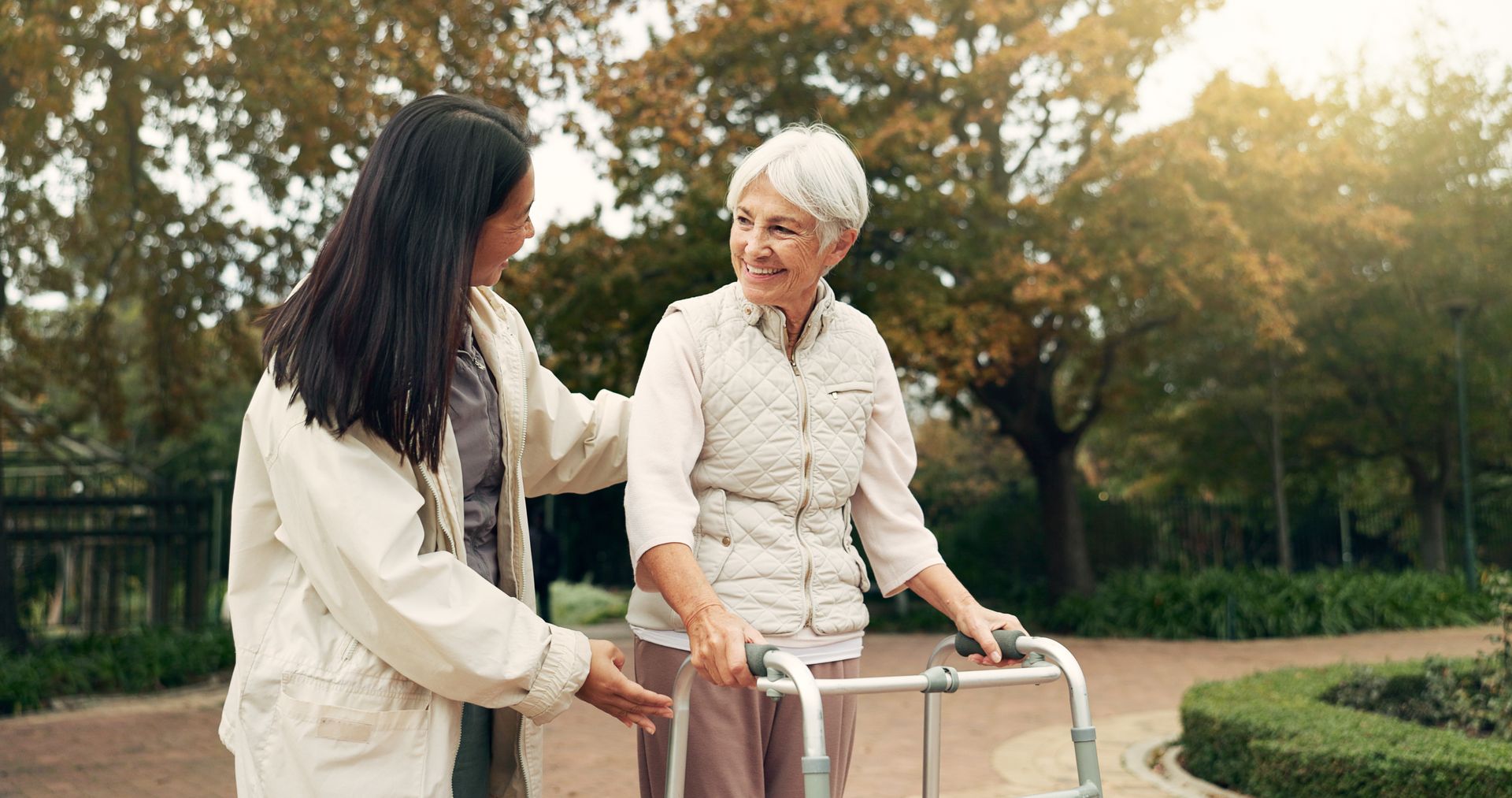
For many seniors, stability is a huge problem. This is because if you aren’t stable and able to maintain your balance well, you are more likely to fall. For seniors, falling is dangerous because with weaker bones and joints, serious injuries are likely. Fortunately, there are a number of things that seniors can do to improve their stability. Here are 5 ways to improve stability for a senior: 1. Balance Exercises By far the best way that you can improve your stability at any age is to regularly engage in balance exercises. There are quite a few balance exercises to choose from that will help you strengthen the right muscles so that you can walk with more confidence and stability. Some balance exercises will require you to use various pieces of exercise equipment such as dumbbells and balance balls, but others don’t need anything other than your body. That makes it easy to do balance exercises no matter where you are! 2. Stretching Exercises This is another type of exercise that you can do to improve stability as a senior. Stretching exercises help to increase the range of motion in joints which can ease the pain of arthritis. In turn, this can stabilize your joints and improve your overall stability. Like balance exercises, there are plenty that you can do that don’t require any equipment. 3. Activity The old adage that “if you don’t use it, you’ll lose it” is true when it comes to how active you are. If you want to maintain and improve your stability, you need to stay active and keep using your whole body. This will help you in more ways than just improving your stability. Staying active as a senior can also help you avoid common conditions that the elderly often face such as osteoporosis, arthritis, and heart disease. If you are overweight, getting more active will help you lose weight, which will improve your overall health condition. 4. Good Shoes You would be surprised at what a good pair of shoes can do for your stability. In fact, the right pair of shoes could make the crucial difference between walking easily and risking falling, just by making a trip from the couch to the fridge. Good shoes provide stability because they give you a flat surface to walk on and plenty of cushioning, so you have some room for error when you place your foot down. They will also make walking around significantly more comfortable, which reduces foot, knee, hip, and even back pain associated with poor foot support. 5. Walking Aids Ask your doctor if a walking aid is right for you to help improve your stability. He or she will be able to prescribe you the right level of assistance when it comes to walking aids. For some people, these walking aids are only temporary help that can improve stability by allowing you to be more active as you build up your muscles to be able to walk unassisted again. If you’re a senior and concerned about your stability, then get started on following these tips today to be able to keep enjoying your life!
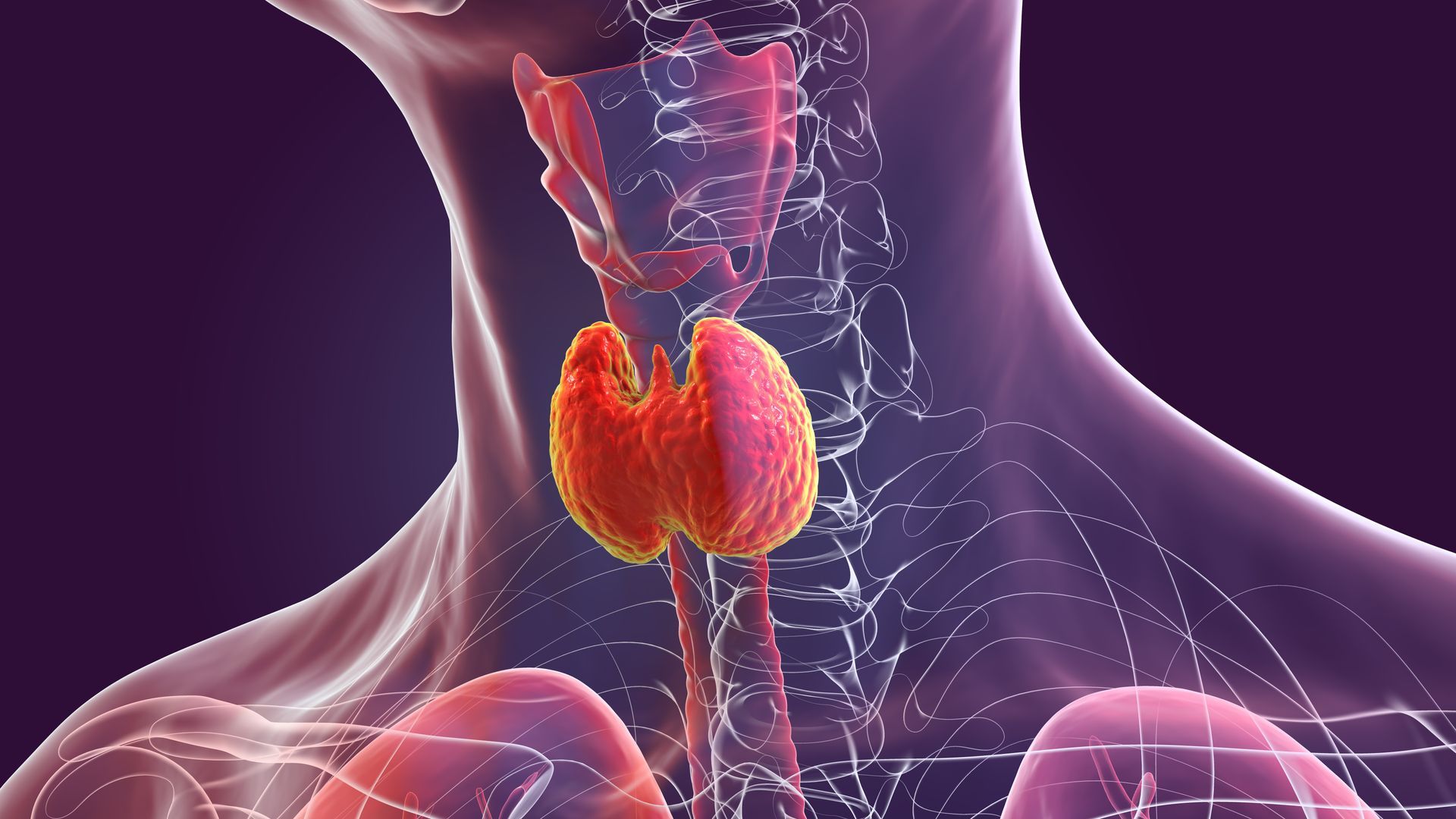
Your thyroid is an important endocrine gland that makes and releases certain hormones. Your thyroid's main job is to control your metabolism -- how your body uses energy. Sometimes, your thyroid doesn't work properly. These conditions are common and treatable. WHAT IS THE THYROID? Your thyroid is a small, butterfly-shaped gland located at the front of your neck under your skin. It's a part of your endocrine system and controls many of your body's important functions by producing and releasing (secreting) certain hormones. Your thyroid's main job is to control the speed of your metabolism (metabolic rate), which is the process of how your body transforms the food you consume into energy. All of the cells in your body need energy to function. When your thyroid isn't working properly, it can impact your entire body. WHAT IS THE ENDOCRINE SYSTEM? Your endocrine system is a network of several glands that create and secrete (release) hormones. A gland is an organ that makes one or more substances, such as hormones, digestive juices, sweat or tears. Endocrine glands release hormones directly into the bloodstream. Hormones are chemicals that coordinate different functions in your body by carrying messages through your blood to your organs, skin, muscles and other tissues. These signals tell your body what to do and when to do it. The following organs and glands make up your endocrine system: * Hypothalamus. * Pituitary gland. * Thyroid. * Parathyroid glands. * Adrenal glands. * Pineal gland. * Pancreas. * Ovaries. * Testes. WHAT DOES MY THYROID DO? As an endocrine gland, your thyroid makes and secretes hormones. Your thyroid produces and releases the following hormones: * Thyroxine (T4): This is the primary hormone your thyroid makes and releases. Although your thyroid makes the most of this hormone, it doesn't have much of an effect on your metabolism. Once your thyroid releases T4 into your bloodstream, it can convert to T3 through a process called deiodination. * Triiodothyronine (T3): Your thyroid produces lesser amounts of T3 than T4, but it has a much greater effect on your metabolism than T4. * Reverse triiodothyronine (RT3): Your thyroid makes very small amounts of RT3, which reverses the effects of T3. * Calcitonin: This hormone helps regulate the amount of calcium in your blood. In order to make thyroid hormones, your thyroid gland needs iodine, an element found in food (most commonly, iodized table salt) and water. Your thyroid gland traps iodine and transforms it into thyroid hormones. If you have too little or too much iodine in your body, it can affect the level of hormones your thyroid makes and releases. Your thyroid hormones affect the following bodily functions: * How your body uses energy (metabolism). * Heart rate. * Breathing. * Digestion. * Body temperature. * Brain development. * Mental activity. * Skin and bone maintenance. * Fertility. WHAT OTHER ORGANS AND GLANDS INTERACT WITH THE THYROID? Your endocrine system is an elaborate network of glands and hormones. Many glands and hormones rely on other glands and hormones to send them signals to start working. In addition, certain hormones can suppress other hormones. Your body has a complex system for controlling the level of thyroid hormones in your body. First, your hypothalamus (a part of your brain located on the undersurface of it) secretes thyroid-releasing hormone (TRH), which stimulates a part of your pituitary gland to secrete thyroid-stimulating hormone (TSH). TSH then stimulates your thyroid follicular cells to release thyroxine (T4) and triiodothyronine (T3) if there are adequate levels of iodine in your body. Your thyroid gland and its hormones affect almost every organ system of your body, including: * Your cardiovascular system: Your thyroid helps regulate the amount of blood your heart pumps through your circulatory system (cardiac output), heart rate and strength and vigor of your heart's contraction (contractility of the heart). * Your nervous system: When your thyroid isn't working properly, it can cause symptoms that affect your nervous system, including numbness, tingling, pain or a sense of burning in the affected parts of your body. In addition, hypothyroidism can cause depression and hyperthyroidism can cause anxiety. * Your digestive system: Your thyroid is involved with how food moves through your digestive system (gastrointestinal motility). * Your reproductive system: If your thyroid isn't working properly, it can cause irregular menstrual periods and issues with fertility. CAN A PERSON LIVE WITHOUT A THYROID? Yes, you can live without your thyroid. However, you'll need to take hormone replacement medication for the rest of your life in order to stay healthy and prevent certain side effects and symptoms. Thyroid removal surgery, known as a thyroidectomy, is a common surgery that can treat certain thyroid conditions. WHERE IS THE THYROID LOCATED? Your thyroid gland is located in the front of your neck, straddling your windpipe (trachea). It's shaped like a butterfly -- smaller in the middle with two wide wings that extend around the side of your throat. A healthy thyroid gland is not usually visible from the outside (there's no appearance of a lump on your neck), and you can't feel it when you press your finger to the front of your neck. WHAT ARE THE PARTS OF THE THYROID? There are two main parts of your thyroid: the two halves (lobes) and the middle of the thyroid that connects the two lobes (thyroid isthmus). Your thyroid is made of thyroid follicle cells (thyrocytes), which create and store thyroid hormone (mainly T3 and T4), and C-cells, which secrete the hormone calcitonin. HOW BIG IS THE THYROID? Your thyroid is about 2 inches long. A healthy thyroid usually does not stick out from your throat, and you can't see it by looking at your neck. However, certain conditions can cause your thyroid to become enlarged. This is known as goiter. If you have a goiter, you may experience the following symptoms: * Swelling in the front of your neck, just below the Adam's apple. * A feeling of tightness in your throat area. * A change in your voice, such as hoarseness (scratchy voice). WHAT CONDITIONS AND DISORDERS AFFECT THE THYROID? There are several different types of thyroid disease. Thyroid disease is very common, with an estimated 20 million people in the United States having some type of thyroid disorder. Women and people assigned female at birth (AFAB) are about five to eight times more likely to be diagnosed with a thyroid condition than men and people assigned male at birth (AMAB). Thyroid diseases are split into two types: primary and secondary. In primary thyroid disease, the disease originates in your thyroid gland. In secondary thyroid disease, the disease originates in your pituitary gland. As an example, if you have a nodule on your thyroid that's releasing excess amounts of thyroid hormones, it would be called primary hyperthyroidism. If a tumor in your pituitary gland is releasing excess amounts of thyroid-stimulating hormone (TSH), which then stimulates your thyroid to produce excess thyroid hormones, it would be called secondary hyperthyroidism. The four main conditions that affect your thyroid include: * Hypothyroidism (underactive thyroid). * Hyperthyroidism (overactive thyroid). * Goiter (enlarged thyroid). * Thyroid cancer HYPOTHYROIDISM Hypothyroidism (underactive thyroid) happens when your thyroid doesn't produce and release enough thyroid hormones. This causes aspects of your metabolism to slow down. It's a fairly common condition that affects approximately 10 million people in the United States. It is treatable. Causes of hypothyroidism include: * Hashimoto's disease, an autoimmune disease. * Thyroiditis (inflammation of the thyroid). * Iodine deficiency. * A nonfunctioning thyroid gland (when the thyroid doesn't work correctly from birth). * Over-treatment of hyperthyroidism through medication. * Thyroid gland removal. HYPERTHYROIDISM Hyperthyroidism (overactive thyroid) happens when your thyroid produces and releases more thyroid hormones than your body needs. This causes aspects of your metabolism to speed up. Approximately 1 out of 100 people over the age of 12 have hyperthyroidism in the United States. It is treatable. Causes of hyperthyroidism include: * Graves' disease, an autoimmune condition. * Thyroid nodules. * Thyroiditis (inflammation of the thyroid). * Postpartum thyroiditis (inflammation of the thyroid that happens after giving birth). * Excess iodine in your blood from diet and/or medication. * Over-treatment of hypothyroidism through medication. * A benign (noncancerous) tumor in your pituitary gland. GOITER Goiter is an enlargement of your thyroid gland. Goiters are relatively common; they affect approximately 5% of people in the United States. Goiters have different causes, depending on their type. * Simple goiters: These goiters develop when your thyroid gland doesn't make enough hormones to meet your body's needs. Your thyroid gland tries to make up for the shortage by growing larger. * Endemic goiters: These goiters occur in people who don't get enough iodine in their diet (iodine is necessary to make thyroid hormone). Iodine is added to table salt in the United States and several other countries, so people who live in those countries usually don't get endemic goiters. * Sporadic goiters: These goiters have no known cause in most cases. In some cases, certain medications, such as lithium, can cause sporadic goiters. THYROID CANCER Thyroid cancer is cancer that begins in your thyroid tissues. Approximately 53,000 people in the United States receive a diagnosis of thyroid cancer every year. Treatments for most thyroid cancers are very successful. Thyroid cancer is classified based on the type of cells from which cancer grows. Thyroid cancer types include: * Papillary: Up to 80% of all thyroid cancer causes are papillary. * Follicular: Follicular thyroid cancer accounts for up to 15% of thyroid cancer diagnosis. * Medullary: About 2% of thyroid cancer cases are medullary. It's often caused by a gene mutation. * Anaplastic: About 2% of thyroid cancer cases are anaplastic. WHAT ARE THE EARLY WARNING SIGNS AND SYMPTOMS OF THYROID PROBLEMS? Different thyroid conditions have different symptoms. However, since your thyroid has a large role in certain body systems and processes, such as heart rate, metabolism and temperature control, there are certain symptoms to look out for that could be a sign of a thyroid condition, including: * Slow or rapid heart rate. * Unexplained weight loss or weight gain. * Difficulty tolerating cold or heat. * Depression or anxiety. * Irregular menstrual periods. If you're experiencing any of these symptoms, talk to your healthcare provider about getting a blood test to check your thyroid function. WHAT ARE COMMON TESTS TO CHECK THE HEALTH OF THE THYROID? The first-line test for checking the health of your thyroid is a blood test that measures your levels of thyroid-stimulating hormone (TSH). It's a screening test for both hypothyroidism and hyperthyroidism. In general, the normal range for a TSH blood test is 0.5 to 5.0 mIU/L (milli-international units per liter). However, this can vary from lab to lab and depending on certain factors, such as pregnancy and your age. Your provider can also check the levels of T4 and T3 (thyroid hormones) in your blood. If your test results come back abnormal your provider may suggest having an imaging test such as a thyroid scan, which uses small amounts of a safe, radioactive material to create images of your thyroid, or a thyroid ultrasound. HOW ARE THYROID CONDITIONS TREATED? There are several treatment options for thyroid conditions depending on what the conditions are and how severe they are. The three main options for treatment include: * Medication. * Surgery. * Radiation therapy and chemotherapy MEDICATION Medications for thyroid conditions include: * Antithyroid medications: These medications block the ability of your thyroid to make hormones. Healthcare providers may prescribe this for hyperthyroidism. * Beta-blockers: These medications help treat symptoms of hyperthyroidism, such as rapid heartbeat, but they do not treat the thyroid condition itself. * Radioactive iodine: This medication damages thyroid cells, eventually leading to the destruction of your thyroid gland. This is a treatment option for hyperthyroidism and thyroid cancer. * Thyroid hormone medications: These medications are a synthetic form of thyroid hormones for the treatment of hypothyroidism. People who have a thyroidectomy or a nonfunctioning thyroid from radioactive iodine usually need to take these medications for the rest of their life. SURGERY The most common type of surgery associated with thyroid conditions is a thyroidectomy. A thyroidectomy is the surgical removal of your entire thyroid gland. Thyroidectomy is one of the treatment options for thyroid disease and is the first-line treatment for thyroid cancer. Another surgery option is a lobectomy, which involves removing only a part of your thyroid. RADIATION THERAPY AND CHEMOTHERAPY Radiation therapy and/or chemotherapy are treatment options for thyroid cancer. Both therapies kill cancer cells and prevent them from growing. Most cases of thyroid cancer do not require radiation or chemotherapy. WHAT ARE THE RISK FACTORS FOR DEVELOPING A THYROID CONDITION? Thyroid conditions are common and can affect anyone at any age. However, some factors put you at a higher risk of developing a thyroid condition, including: * Having a family history of thyroid disease. * Having an autoimmune condition, such as Type 1 diabetes, rheumatoid arthritis or lupus. * Taking a medication that's high in iodine. Being older than 60, especially if you're a woman or a person who was assigned female at birth (AFAB). HOW CAN I KEEP MY THYROID HEALTHY? The main way to keep your thyroid healthy is to make sure you're getting enough iodine in your diet. Your thyroid needs iodine to make thyroid hormones. The good news is that the majority of people get adequate amounts of iodine through iodized table salt and foods that are fortified with iodine. Other food sources that contain iodine include: * Cheese. * Cow's milk. * Eggs * Yogurt. * Saltwater fish. * Shellfish. * Seaweed. * Soy milk. * Soy sauce. However, it's important not to consume too much iodine because it can cause problems. If you have any questions or concerns about your thyroid health, don't be afraid to talk to your healthcare provider. WHEN SHOULD I CALL MY DOCTOR ABOUT MY THYROID? If you're experiencing symptoms of thyroid disease, such as changes in your weight, heart rate and temperature sensitivity, contact your healthcare provider. They can run a simple blood test to see if your thyroid is the cause of your symptoms. Your thyroid is an important gland in your endocrine system that affects many aspects of your body. Thyroid disease is very common and treatable. If you experience any thyroid disease-related symptoms or want to know if you have any risk factors for developing thyroid disease, don't be afraid to talk to your healthcare provider. They're there to help you. Source: Cleveland Clinic

Makes 4 servings 4 boneless skinless chicken breasts (4 ounces each) 4 small skinless chicken drumsticks (about 2 1/2 ounces each) 3 tablespoons all-purpose flour 1/2 teaspoon poultry seasoning 1/4 teaspoon garlic salt 1/4 teaspoon black pepper 1 1/2 cups cornflakes, crushed 1 tablespoon dried parsley flakes 1 egg white 1 tablespoon water Nonstick cooking spray 1. Preheat oven to 375. Rinse chicken. Pat dry with paper towels. Trim off any fat. 2. Combine flour, poultry seasoning, garlic salt and pepper in large resealable food storage bag. Combine cornflake crumbs and parsley in shallow bowl. Whisk together egg white and water in small bowl. 3. Add chicken to flour mixture, one or two pieces at a time. Seal bag; shake until chicken is well coated. Remove chicken from bag, shaking off excess flour. Dip into egg white mixture, coating all sides. Roll in crumb mixture. Place in shallow baking pan. Repeat with remaining chicken, flour mixture, egg white mixture and crumb mixture. 4. Lightly spray chicken pieces with cooking spray. Bake breast pieces 18 to 20 minutes or until no longer pink in center. Bake drumsticks about 25 minutes or until juices run clear. Nutrients per serving: 1 chicken breast and 1 drumstick Calories: 314, Calories from fat: 17%, Total Fat: 6g, Saturated Fat: 2g, Cholesterol: 170mg, Sodium: 278mg, Carbohydrate: 13g, Fiber: 1g, Protein: 50g
